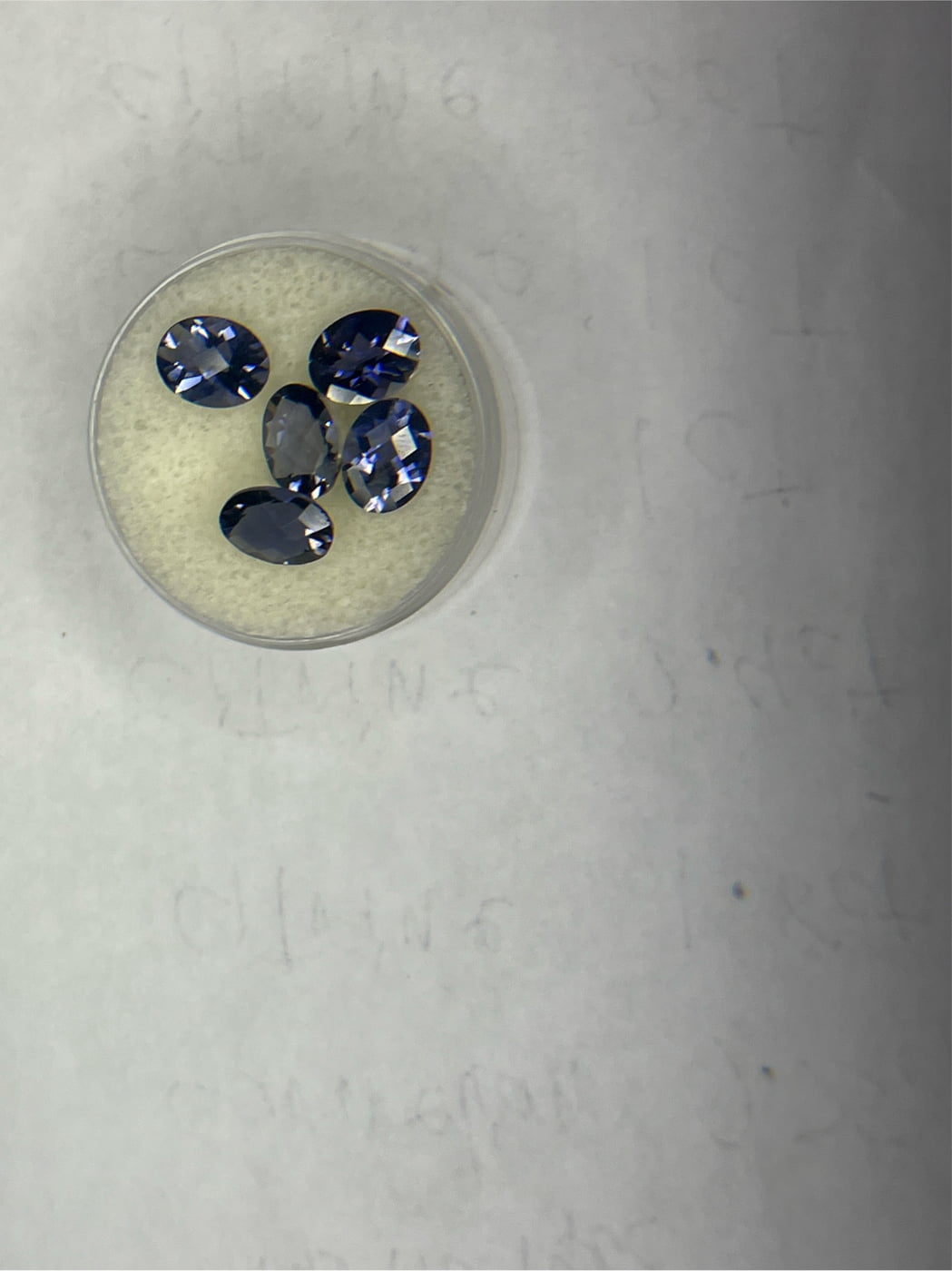
Iolite 8 MM 1Ct Checkerboard Cut Oval Design
Non-returnable
$60.00
Tags:
Iolite’s strong pleochroism makes the gem tricky to cut for best color. This in turn continues to pose challenges to producers and buyers interested in promoting the attractive yet problematic gem to retailers as an affordable blue-gem alternative.
This silicate of aluminum, iron, and magnesium has two distinctive features—a beautiful, violetish blue through slightly violetish blue hue derived from iron and a striking, eye-visible pleochroism. Its pleochroic colors differ with its bodycolor. Iolites that appear violet display light violet, dark violet, and yellow-brown pleochroic colors. Bluish iolites display colorless to yellow, blue-gray, and dark violet pleochroic colors. From some angles, then, a bluish iolite can actually appear completely colorless or yellow, and a violetish iolite can look brown.
Iolites are usually cut as faceted gems, but they are also frequently cut into cabochons.
The size range for a fashioned iolite is anywhere from 1 to 10 carats. Fine iolites over 5 carats are rare.
Iolite falls at 7 to 7.5 on the Mohs hardness scale, but given that it has distinct cleavage in one direction, its toughness is only fair. This makes iolite vulnerable to breakage when set in a ring or other setting exposed to rough daily wear.
Unlike tanzanite, iolite is rarely treated. Fine iolite comes by its beautiful blues and violets naturally. Its freedom from enhancement other than normal cutting and polishing is a selling point when customers consider that most blue gems, from inexpensive blue topaz to fine sapphire, receive routine treatment of one type or another.
Iolites are usually cut as faceted gems, but they are also frequently cut into cabochons.
The size range for a fashioned iolite is anywhere from 1 to 10 carats. Fine iolites over 5 carats are rare.
Iolite falls at 7 to 7.5 on the Mohs hardness scale, but given that it has distinct cleavage in one direction, its toughness is only fair. This makes iolite vulnerable to breakage when set in a ring or other setting exposed to rough daily wear.
Unlike tanzanite, iolite is rarely treated. Fine iolite comes by its beautiful blues and violets naturally. Its freedom from enhancement other than normal cutting and polishing is a selling point when customers consider that most blue gems, from inexpensive blue topaz to fine sapphire, receive routine treatment of one type or another.
Because iolite is fairly hard it’s often found in alluvial deposits. In addition to the gem gravels of Sri Lanka, iolite occurs in several areas of Africa, including Kenya and central Tanzania. Other iolite source countries include India, Brazil, and Norway. A significant iolite deposit was discovered in Madagascar in 1994.
Iolite has yet to catch on with retailers as dramatically as tanzanite did in the 1970s and 1980s. Why not? Experts believe that jewelry designers and retailers have yet to see a consistent enough supply of iolite in uniform fine quality.
Quantity
Product Details
Iolite 8 MM 1Ct Oval Cut/ Checkerboard Design
Sellers Specifications:
8MM X 6MM
Cut and Design:
Oval / Checkerboard Design
Clarity:
AAA
Eye Clean
Stone Type:
Iolite
Minerals found:
Cordierite
Visual Description:
Violetish blue (pleochroic colorless-yellow)
Such a brilliant violet blue you could mistake it as a Tanzanites
The cutter did an excellent job at preserving the beauty of the stone by giving a standard cut and bringing out the brilliance of the Iolite with the checkerboard design.

